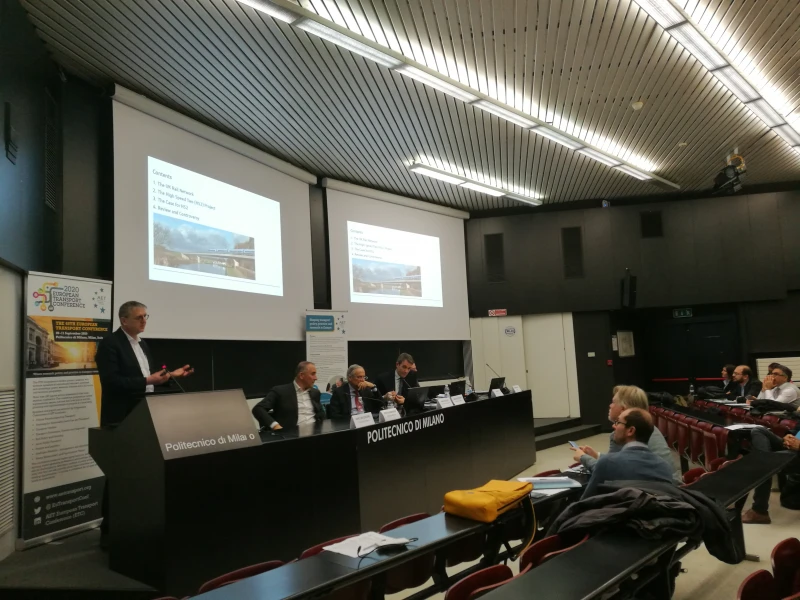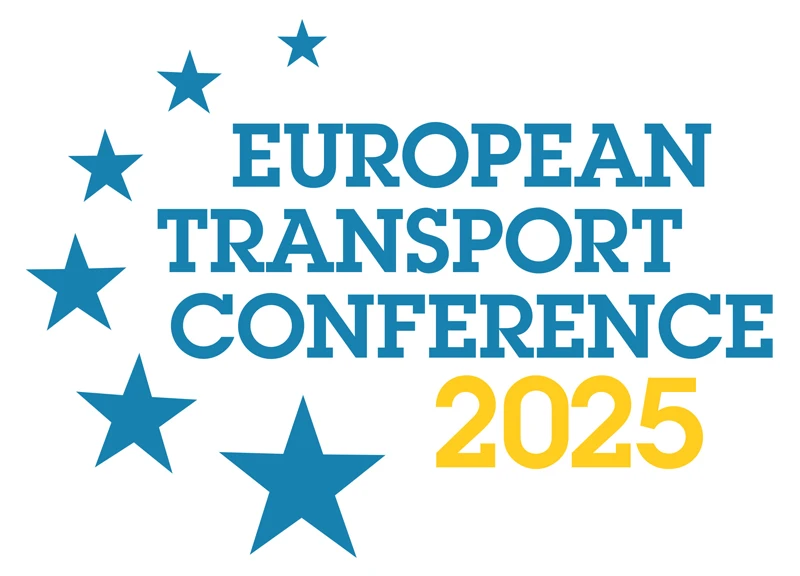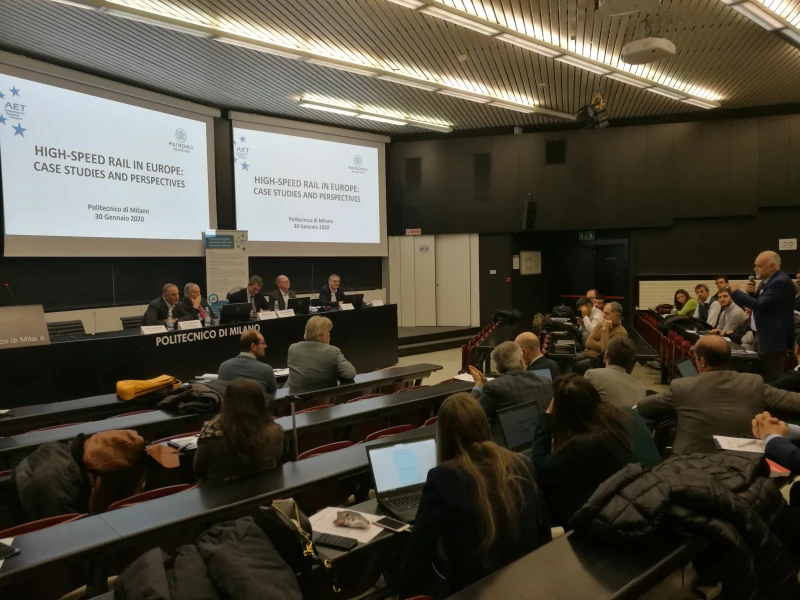-
Past ETC Papers

Browse, search and view papers from the past AET Conferences.
-
Members' Area

AET promotes networking and exchange of ideas, information and opportunities amongst members.
Conference Papers 2020
Online
ETC Conference Papers 2020
HARMONY model suite: an integrated spatial and multimodal transport planning tool to lead a sustainable transition to a new mobility era
Seminar
Day 1 (9 Sep 2020), Session 3, New Approaches in Transport Modelling, 15:30 - 17:30
Status
Accepted, documents submitted
Submitted by / Abstract owner
Francesca Fermi
Authors
Maria Kamargianni, Lampros Yfantis, Manos Chaniotakis, Pappelis Dimitris, University College London - MaaSLab, UK
Francesca Fermi, Angelo Martino, TRT Trasporti e Territorio, IT;
Fulvio D. Lopane, Michael Batty, University College London - CASA, UK
Michiel de Bok, Loránt Tavasszy, Delft University of Technology, NL
Athena Tsirimpa, MobyX Software, CY
Ioannis Tsouros, Amalia Polydoropoulou, University of the Aegean, GR
Panagiotis Georgakis, Angelica Salas, University of Wolverhampton, UK
Tamara Djukic, Aimsun, ES
Efthimios Bothos, Babis Magoutas, Institute of Communication and Computer Systems, GR
Short abstract
This paper reports on the HARMONY project which envisages developing a new generation of harmonised spatial and multimodal transport planning tools
Abstract
The importance of integrated spatial and transport planning in regional and urban policy making stems from the fundamentally interdependent relationship of land-use, transport demand and transport supply. The adoption of an integrated approach would offer the possibility to local authorities to steer urban development towards simultaneously pursuing economic competitiveness, social cohesion, mobility and environmental sustainability. This is even more important in the current situation where the latest development in innovative mobility services and technology might significantly influence the mobility system.
Against this background, the HARMONY project envisages developing a new generation of harmonised spatial and multimodal transport planning tools which comprehensively model the dynamics of spatial organisation and changing transport sector taking into consideration the dynamics that new services and technologies introduce. The ambition is to represent new forms of mobility for freight and people in order to enable metropolitan area authorities to lead the transition to a low carbon new mobility era in a sustainable manner.
More specifically, the main goal of the HARMONY project is to develop a Model Suite (MS) as a multi-scale, software-agnostic, integrated activity-based model system, which enables end-users to link independent models and analyse a portfolio of regional and urban interventions for both passenger and freight mobility. These interventions would include policies and capital investments, land-use configurations, economic and sociodemographic assumptions, travel demand management strategies and new mobility service concepts. The main objective behind the model system’s architecture is to enable the evaluation of such interventions with regards to their impact on land-use, economic growth, transportation networks, energy, vehicular noise and emissions, while, at the same time, provide recommendations for Sustainable Urban Mobility Plans (SUMPs) of the new mobility era.
Depending on the examined scenario, each level of the HARMONY MS can be applied either integrated or in isolation, given adequate availability of exogenous data inputs. The HARMONY MS consists of the Strategic Level (Long-term), the Tactical Level (Mid-Term) and the Operational Level (Short-term).
The Strategic Level is mainly composed of regional economic, demographic forecasting, land-use, spatial freight interaction and long-term mobility choice models. It operates on a long-term horizon (year-to-year) and is mainly responsible for generating i) disaggregate household and firm population and the locations for different types of activities, ii) aggregate commodity flows between employment sectors and iii) long-term mobility choices of individuals (agents).
The Tactical Level is a fully agent-based passenger and freight demand model and it consists of two sub-models which model passenger and freight agents’ choices on a day-to-day level. The output from both sub-models is: i) disaggregated demand in the form of agents’ daily activity schedules (trip-chains), and ii) disaggregated demand in the form of truck tours and their corresponding trips.
The Operational Level represents the transport supply and demand interactions at high granularity (e.g. second to second, minute to minute). It can be characterised as a multimodal network assignment model system that is responsible for loading the demand into different types of networks, while simultaneously capturing travellers’ route choices and dynamic schedule re-evaluation choices due to supply conditions. It also includes dedicated modules that emulate disruptive new mobility service operations and their interactions with agents (e.g. traveller, vehicles) of the system.
HARMONY aims to apply the integrated model system (or part of it) in four metropolitan areas and evaluate the impact of different modelling exercises and spatial or transport planning scenarios: Oxfordshire (UK), Rotterdam (NL), Turin (IT) and Athens (GR). Application and evaluation of modelling use-cases will enable HARMONY to generate evidence-based recommendations with regards to Sustainable Urban Mobility Plans and indications of how new spatial and transport planning policies and investments can contribute to sustainable developments within the HARMONY metropolitan areas, and potentially, to other metropolitan areas on European scale.
The HARMONY MS will be developed and applied from 2020 to 2022 in a project funded by the European Commission Horizon 2020 Framework Research Programme (www.harmony-h2020.eu). The consortium is led by the University College London and composed by Technische Universiteit Delft, University of the Aegean, University of Wolverhampton, TRT, MOBY, Aimsun, and Institute of Communication and Computer Systems as key partners of the scientific and theoretical activities.
This paper is intended to provide a general overview of the project and a description of the conceptual architecture designed for the development of the integrated modelling system. Together with an overview on the project, the paper includes the model methodological outline and the illustration of the interaction among the model components.
Programme committee
Transport Models
Topic
The future of transport
Documents:


Association For
European Transport
Forester House
Doctors Lane
Henley-in-Arden
Warwickshire, UK
B95 5AW
+44 (0) 15 64 793552
VAT number: 710 1866 64
Conference Supporters & Endorsers




Legal Entity
The Association for European Transport is registered as an Association ('vereniging') with the Chamber of Commerce for Haaglanden in The Netherlands under company number 27170096.
Built on Zenario




